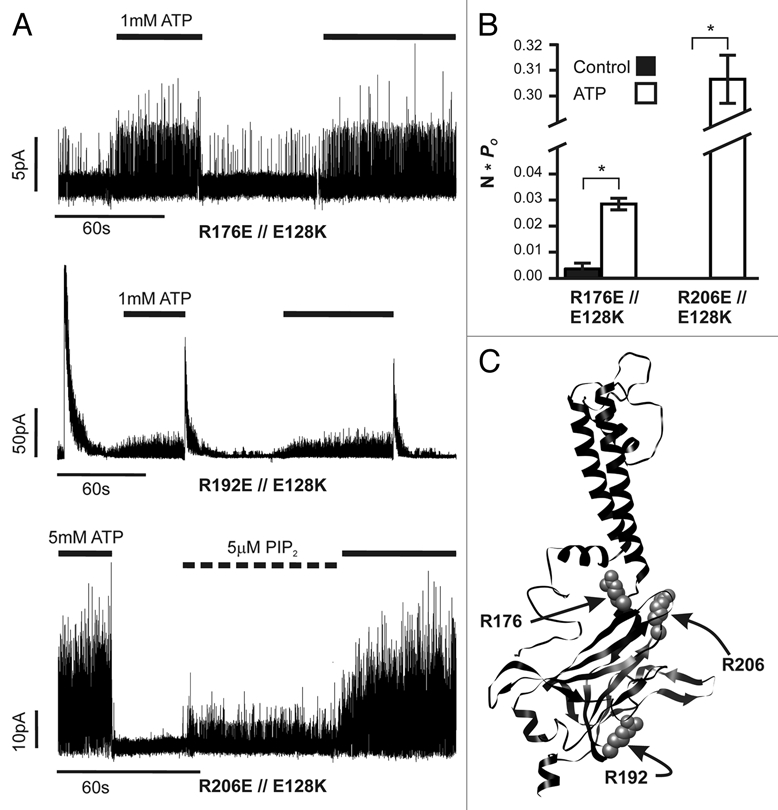Figure 2.

ATP-activation observed with co-expression of E128K and Kir6.2 mutations that diminish PIP2 response. (A) Representative inside-out patch voltage-clamp records from ATP-activation pairs identified in the E128-interacting screen. Recordings are all from transiently transfected COSm6 cells and control solution is Kint/EDTA. Application of 1 or 5 mM ATP or 5 µM PIP2 is indicated by bars above each trace. (B) Average currents in the absence and presence of ATP were quantified as N*Po values for R176E//E128K (0 vs. 1 mM ATP) and R206E//E128K (0 vs. 5 mM ATP); no activity was seen during control conditions (i.e., no ATP) in any R206E//E128K patch. Error bars represent SEM for each condition; number of patches tested is given in Figure 1B. (C) Placement of ATP-activation mutations in Kir6.2. The three residues mutated are shown using space-filling atoms on a ribbon homology model of Kir6.2.
